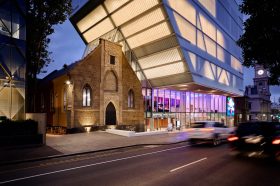Image via pexels.com
A new study into regional and metropolitan museum audiences titled, Guess Who’s Going to the Museum?, has arrived at some interesting findings.
The research revealed that if you had ten people gathered around an exhibit in a NSW public museum it is likely that half would be under 55; three of that ten would be part of a group that included children, four of them would be visitors to the region staying more than two nights and half would have a household income of under $80,000.
Overall, the study found that such demographics were not a barrier in visiting a museum.
Michael Rolfe CEO Museums & Galleries NSW (MGNSW) said, ‘It’s good to see that age, household income, level of education and employment status are not barriers to families being able to enjoy their local museum.’
It was a comment echoed by Deputy Premier and Minister for the Arts, Troy Grant, who was heartened by the stretch of engagement across the state.
The study was a third in a series of audience surveys conducted by M&GNSW, this one partnering with the Museums of the Riverina, Newcastle Museum and the Tweet Regional Museum.
In 2007, a pilot study of public gallery audiences in the Western Sydney and Hunter regions went on to include all but three public galleries of NSW. Guess Who’s Going to the Gallery? NSW State Report was published in 2011.
It was followed with a survey of the Queensland gallery sector in 2012 in association with M&G QLD.
How this edition differed from the earlier studies is that it surveyed museum audiences, enabling a fascinating comparative snapshot of audiences across the sector.
Using standardised data collection methodologies allowed, for the first time, reliable comparisons between museum and gallery audiences.
Most interesting among those differences were:
- Similar to gallery audiences, there is a higher frequency of tertiary education (51%) when compared to the general regional population (11%).
- Museum audiences are twice as likely to come in groupings that include children (33%) than are gallery audiences (15%).
- 50% of museum audiences are first-time visitors, compared to 28% of regional gallery audiences. Regional gallery audiences are more likely to have previously visited “more than 5 times” (48% v. 20%).
- Around a quarter of museum audiences have visited in the last six months. This compares with 51% of regional gallery audiences.
- Regional gallery audiences are more likely to attend a public program (38%) than museum audiences (22%)
- Museum audiences skew towards female (62%) when compared to the general regional population (51%) but skew towards male when compared to gallery audiences (38% v. 31%).
- There is a higher representation of retirees in museum audiences (33%) than in regional gallery audiences (28%).
Key Findings on Public Museums in NSW:
- Museum audiences are local, with around 3 in 5 visitors living within 50 km of the museum.
- A third of museum audiences are attending with children, with 71% of those aged 35-44 attending in social groupings including children.
- They are predominately female and are older than the NSW regional population, with around half being aged over 55.
- 45% of audiences report “coming with” or “bringing family and friends”, as a motivation for coming to the museum.
- Only a small proportion of museum audiences are attending on their own (19%).
- Overall 40% of museum audiences are tourists who live more than 50 km from the museum, compared to 26% of gallery audiences.
- 38% of museum audiences who are visiting a region, stay longer (4 or more nights) than the average domestic tourist (3.3 nights).
- 3% of museum audiences identify as Aboriginal or Torres Strait Islander. This varies between individual museums and compares to 2% of the NSW regional population.
- 65% of museum audiences report a household income of more than $61,000 per annum, which is higher than that of gallery audiences (37%).
- 99% rate their overall museum experience as “good” or “terrific”.
- Most visitors praise the helpfulness of staff and volunteers (100% positive rating).
- A small percentage report no use of the Internet (5%) and many report the importance of printed publications, including the local newspaper, as a source of information.
Related stories
Regional galleries proved to add value





